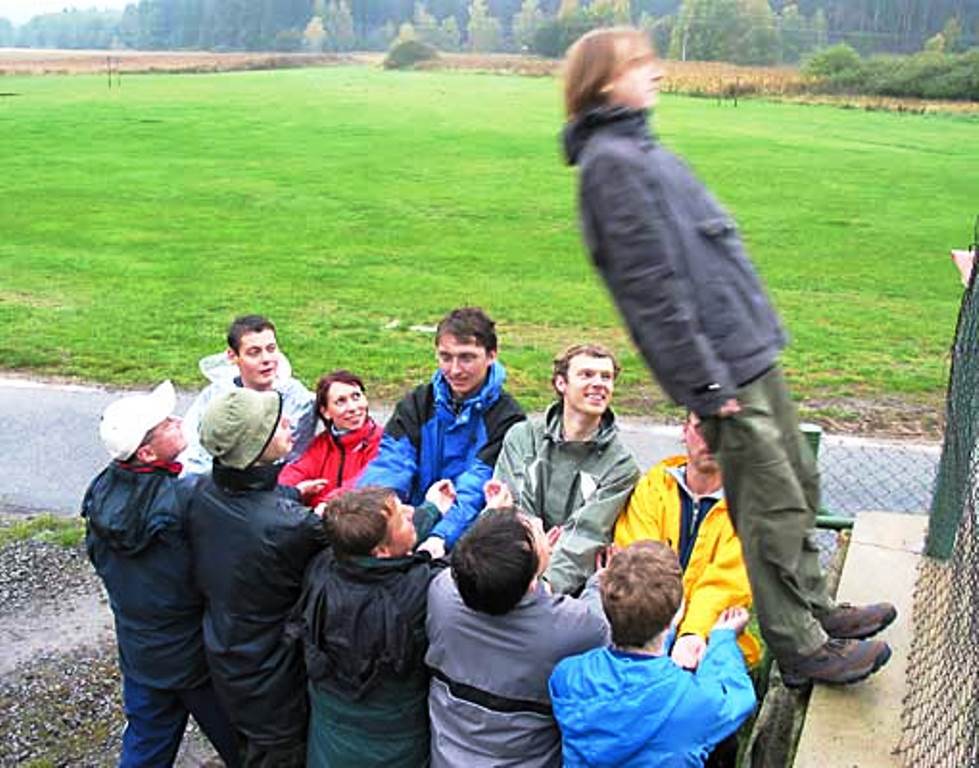Trust and Vulnerability Go Hand-In-Hand for Success
 If you have ever participated in a “trust fall” you have a very good understanding of how trust and vulnerability go hand-in-hand. Having experienced this sensation, I can personally attest to the accuracy of the statement. You climb up about six feet and have people, some smaller in size than you say, “Come on! We’ve got you!” Then, you close your eyes, cross your arms over your chest and fall, hoping they really have “got you.”
If you have ever participated in a “trust fall” you have a very good understanding of how trust and vulnerability go hand-in-hand. Having experienced this sensation, I can personally attest to the accuracy of the statement. You climb up about six feet and have people, some smaller in size than you say, “Come on! We’ve got you!” Then, you close your eyes, cross your arms over your chest and fall, hoping they really have “got you.”
So, what comes first, trust or vulnerability, and what difference does it make? It matters, because without trust in schools, there is no way to accomplish the lofty goals set before us. In order to have authentic trust among a team, individuals must feel safe enough to show vulnerability, by opening up about themselves and even admitting mistakes or shortcomings, with the intent to overcome these areas. That’s what brings a group to a sense of psychological safety, which is a critical component of a highly successful team. And, how do people feel safe to open up and admit being vulnerable? It happens as you hold conversations together where you listen to understand rather than judge, presume positive intent and use language aligned with coach-like behaviors. These are the exact areas we train on during our leadership coaching and instructional coaching seminars. It goes back to an earlier quote, “People don’t care how much you know until they know how much you care.”
In support of creating an environment of vulnerability and trust – let’s look to people who have spent their careers studying both topics.
“Trust is a product of vulnerability that grows over time and requires work, attention, and full engagement.”
Brené Brown, Dare to Lead, 2018
“It should come as no surprise that the first step for leaders wanting to cultivate psychological safety in their team is to work on building trust. But though it’s important, trust alone isn’t sufficient for psychological safety. More than merely trusting that team members have one another’s best interests at heart, psychologically safe teams go a step further to show each other respect, sensitivity, and caring. And to do this, they have to see one another as real human beings with weaknesses and flaws. In fact, Google’s research program found that the single most powerful contributor to psychological safety was vulnerability, or a willingness to openly admit our failings. And it has to start at the top. “Many leaders,” says Levi King, “say ‘Yes it’s safe [to be vulnerable,]’ but they’re not willing to go there themselves. I can’t just talk about this figuratively. I have to show that at our company, it’s okay to make mistakes—because we forgive each other and assume positive intent.”
Tasha Eurich, Insight: Why We’re Not as Self-Aware as We Think, and How Seeing Ourselves Clearly Helps Us Succeed at Work and in Life, 2017 What do you think? How are you being vulnerable and how are you encouraging people on your team to open up and be vulnerable with each other, learning from mistakes that will inevitably happen? Remember, trust and vulnerability really do go hand-in-hand for success, and sometimes we need a fresh approach for both.